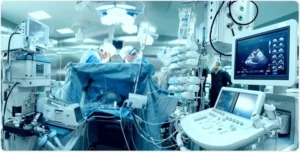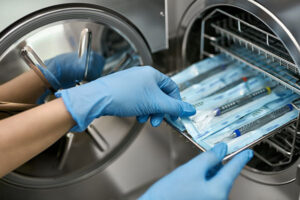In today's fast-paced and interconnected world, maintaining proper hygiene and safety measures has become more critical than ever. One area that demands unwavering attention is equipment sterilization. Whether in medical facilities, laboratories, food processing plants, or even tattoo parlors, the sterilization of equipment plays a pivotal role in preventing the spread of infections and maintaining the overall well-being of individuals. This article delves into the significance of equipment sterilization, its methods, and its far-reaching impact on various industries.

The Significance of Equipment Sterilization:
Equipment sterilization refers to the process of eliminating or deactivating all forms of microbial life on surfaces, instruments, or materials. The primary goal is to prevent the transmission of harmful microorganisms such as bacteria, viruses, and fungi, which can lead to infections and diseases. The importance of equipment sterilization can be understood through the following points:
- Healthcare Industry: In healthcare settings, equipment sterilization is of paramount importance. Surgical instruments, medical devices, and even surfaces in patient rooms must be meticulously sterilized to ensure that patients are not exposed to potential infections. Failure to properly sterilize equipment can lead to healthcare-associated infections (HAIs), causing severe complications and even fatalities.
- Food Industry: In food processing and preparation, equipment sterilization is crucial to prevent foodborne illnesses. Cutting boards, utensils, and processing machinery must be sanitized to eliminate harmful pathogens and ensure the safety of consumers.
- Laboratories: Research laboratories dealing with sensitive experiments or biological samples must maintain a sterile environment to prevent cross-contamination and inaccurate results. Proper sterilization techniques are essential to guarantee the integrity of scientific research.
- Pharmaceutical Industry: In pharmaceutical manufacturing, equipment sterilization is vital to maintain the quality and safety of drugs. Contaminated equipment could compromise the efficacy of medications or introduce harmful substances into the final products.
- Cosmetic and Tattoo Studios: Even in settings like tattoo parlors and beauty salons, equipment sterilization is necessary. Sterilizing needles, piercing instruments, and other tools helps prevent the spread of infections and ensures a safe experience for customers.
Methods of Equipment Sterilization:
Several methods are employed for equipment sterilization, each catering to specific needs and industries. Some of the commonly used methods include:
- Autoclaving: This is perhaps the most widely recognized method. Autoclaves use high-pressure steam to achieve sterilization. The combination of high heat and moisture effectively kills microorganisms, making it suitable for heat-resistant materials.
- Chemical Sterilization: Chemical agents like hydrogen peroxide, ethylene oxide, and formaldehyde can be used for sterilization. These agents penetrate materials and kill microorganisms, making them suitable for delicate and heat-sensitive items.
- Radiation Sterilization: Gamma radiation, electron beam radiation, and X-ray radiation are used to destroy microorganisms on various materials. This method is employed for disposable medical supplies, pharmaceuticals, and certain food products.
- Filtration: Filtration through specialized membranes is used to sterilize heat-sensitive liquids, air, and gases. This method physically removes microorganisms rather than killing them with heat or chemicals.

The Far-Reaching Impact:
The consequences of inadequate equipment sterilization can be dire, ranging from increased healthcare costs and compromised research outcomes to outbreaks of foodborne illnesses and compromised consumer trust. Proper equipment sterilization not only protects individuals but also has wider social and economic implications:
- Healthcare Cost Reduction: By preventing HAIs, proper sterilization can significantly reduce the financial burden on healthcare systems by minimizing the need for extended treatments and additional interventions.
- Public Safety: Ensuring equipment sterilization in food processing and preparation maintains public safety and confidence in the food supply chain, preventing widespread outbreaks of illnesses.
- Research Credibility: Reliable research outcomes are dependent on the maintenance of sterile laboratory conditions. Proper sterilization safeguards the integrity of scientific research, leading to credible findings and advancements.
- Consumer Trust: Businesses that prioritize equipment sterilization in industries such as cosmetics and tattooing can establish trust with their customers, leading to repeat business and positive word-of-mouth referrals.
Conclusion:
In a world where rapid globalization and interconnectivity expose us to a multitude of health risks, equipment sterilization stands as a fundamental defense mechanism. The various methods and approaches employed in equipment sterilization ensure the safety, well-being, and progress of societies across the globe. From healthcare facilities to food production plants, laboratories to beauty studios, the meticulous practice of equipment sterilization is a testament to our commitment to hygiene, safety, and the preservation of human health.
Reach out to us today and learn about our equipment sterilization capabilities that meet your product needs.
